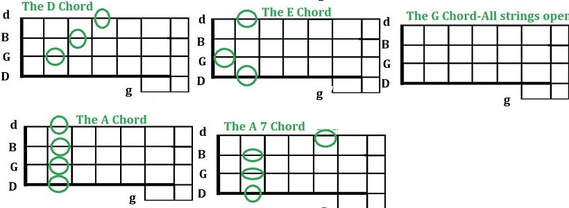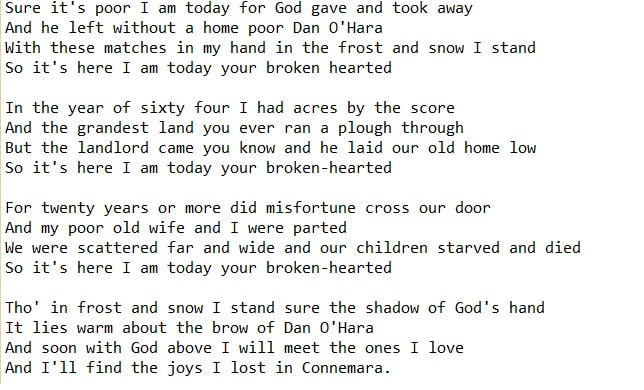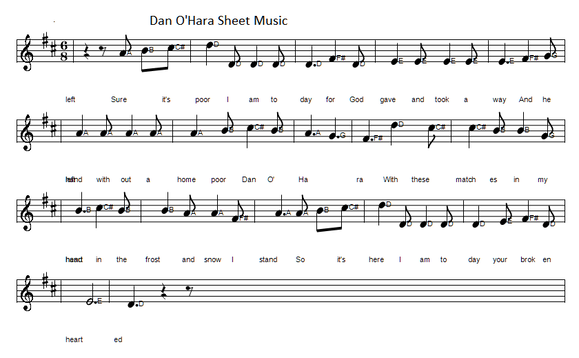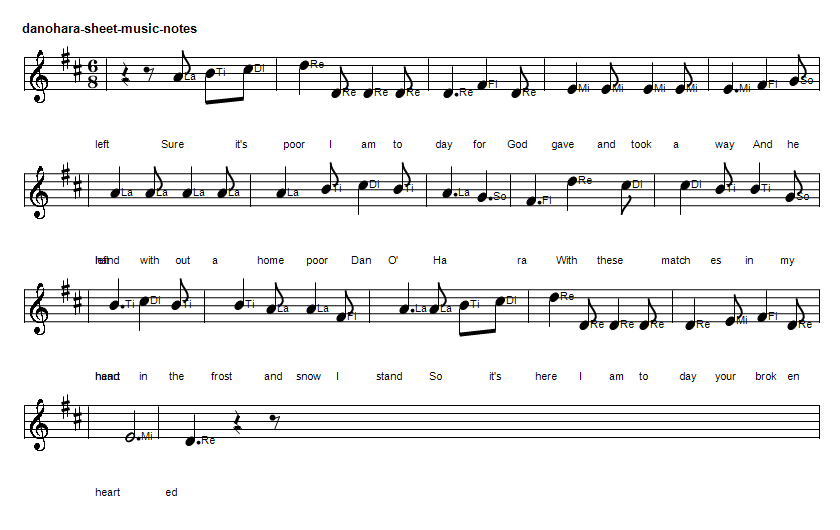Dan O'Hara Lyrics And Chords
Dan O' Hara Folk Song Lyrics And Easy Guitar Chords. A traditional Irish folk song recorded by Finbar Furey, Delia Murphy. Sheet music notes included. Also recorded by Blackthorn.The 5 string banjo chords are included. I have given two versions of the guitar chords, one in the key of G and the other in D. The sheet music notes are included. Delia Murphy was one of the first Irish singers to record The Spinning Wheel Song long before Foster And Allen's version .
.[[A7]Sure it's[D] poor I am today for God[E] gave and took a[A]way
And he[D] left without a home poor Dan O'[A]Har[D]a
With these[G] matches in my hand in the[D] frost and snow I[A] stand
So it's[D] here I am today your broken[Em] hea[A]rte[D]d
In the year of sixty four I had acres by the score
And the grandest land you ever ran a plough through
But the landlord came you know and he laid our old home low
So it's here I am today your broken-hearted
For twenty years or more did misfortune cross our door
And my poor old wife and I were parted
We were scattered far and wide and our children starved and died
So it's here I am today your broken-hearted
Tho' in frost and snow I stand sure the shadow of God's hand
It lies warm about the brow of Dan O'Hara
And soon with God above I will meet the ones I love
And I'll find the joys I lost in Connemara.
Back to Irish Folk Songs C-F
And he[D] left without a home poor Dan O'[A]Har[D]a
With these[G] matches in my hand in the[D] frost and snow I[A] stand
So it's[D] here I am today your broken[Em] hea[A]rte[D]d
In the year of sixty four I had acres by the score
And the grandest land you ever ran a plough through
But the landlord came you know and he laid our old home low
So it's here I am today your broken-hearted
For twenty years or more did misfortune cross our door
And my poor old wife and I were parted
We were scattered far and wide and our children starved and died
So it's here I am today your broken-hearted
Tho' in frost and snow I stand sure the shadow of God's hand
It lies warm about the brow of Dan O'Hara
And soon with God above I will meet the ones I love
And I'll find the joys I lost in Connemara.
Back to Irish Folk Songs C-F
Dan O' Hara Sheet Music Notes In The Key Of D Major
God Fulfills the New Covenant
God’s act to keep you praying and trusting so that you remain in his love and are kept blameless and joyful for the glory of God — that act is the fulfillment of the New Covenant. “I will make with them an everlasting covenant, that I will not turn away from doing good to them. And I will put the fear of me in their hearts, that they may not turn from me” (Jeremiah 32:40). The New Covenant promise is that God will act so decisively for his new-born elect that they will not turn from him. They will be kept. They will pray and they will trust and they will keep themselves in the love of God. He will see to it. Our praying and trusting him to keep us is his keeping us. This is God’s New Covenant promise.
http://www.desiringgod.org/messages/glory-majesty-dominion-and-authority-keep-us-safe-for-everlasting-joy
God’s act to keep you praying and trusting so that you remain in his love and are kept blameless and joyful for the glory of God — that act is the fulfillment of the New Covenant. “I will make with them an everlasting covenant, that I will not turn away from doing good to them. And I will put the fear of me in their hearts, that they may not turn from me” (Jeremiah 32:40). The New Covenant promise is that God will act so decisively for his new-born elect that they will not turn from him. They will be kept. They will pray and they will trust and they will keep themselves in the love of God. He will see to it. Our praying and trusting him to keep us is his keeping us. This is God’s New Covenant promise.
http://www.desiringgod.org/messages/glory-majesty-dominion-and-authority-keep-us-safe-for-everlasting-joy
Dan O'Hara sheet music notes in Do Re Mi




